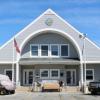Elder abuse can take many forms
Q. How common is elder abuse?
The U.S. Administration on Aging found that more than a half-million people over the age of 60 are abused or neglected each year.
About 90 percent of abusers are related to the victims. People older than 80 years suffer abuse and neglect two to three times their proportion of the senior population.
Almost four times as many new incidents of abuse, neglect, and/or self-neglect were not reported as those that were reported and substantiated by public authorities.
All 50 states have elder-abuse prevention laws and have set up reporting systems.
Adult Protective Services agencies investigate reports of suspected elder abuse. To report elder abuse, contact the APS office.
The telephone numbers can be found at the website operated by The National Adult Protective Services Association. Go to: http://www.apsnetwork.org/.
The APS agency keeps calls confidential. If the agency decides there may be a law violation, it assigns a caseworker to investigate. If the victim needs crisis intervention, services are available. If elder abuse is not substantiated, most APS agencies will work with other community agencies to get necessary social and health services.
The senior has the right to refuse services offered by APS. The APS agency provides services only if the senior agrees or has been declared incapacitated by the court and a guardian has been appointed.
What is elder abuse? It can take a variety of forms: physical, sexual, emotional and financial. Neglect of an older person also is within the umbrella of elder abuse.
One of the most common types of elder abuse is self-neglect.
Self-neglect often occurs in older adults who have declining health, are isolated or depressed, or who abuse drugs or alcohol.
If concerned an older adult might need help, these are symptoms to look for:
• Physical injury such as a bruise, cut, burn, rope mark, sprain or broken bone;
• Refusal of the caregiver to allow you to visit the older person alone;
• Indications of dehydration, malnourishment, weight loss and poor hygiene;
• Negative behavior such as agitation, withdrawal, expressions of fear or apathy;
• Unexplained changes in finances.




















































